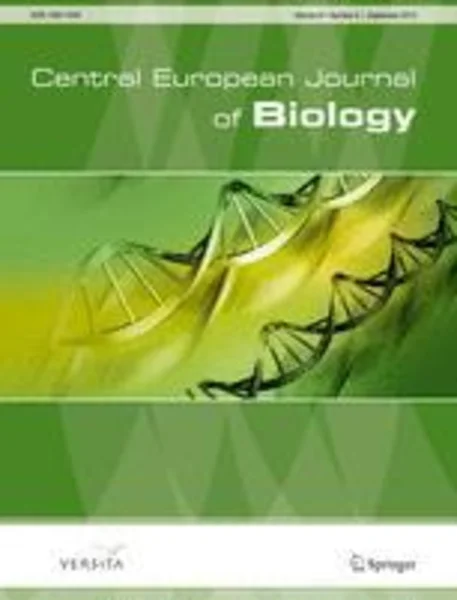-
the role of rock mining for maintaining dauco carotae-crepidetum rhoeadifoliae hejný et grüll in hejný et al. 1979 — a new to poland plant association
جزئیات بیشتر مقاله- تاریخ ارائه: 1392/07/24
- تاریخ انتشار در تی پی بین: 1392/07/24
- تعداد بازدید: 976
- تعداد پرسش و پاسخ ها: 0
- شماره تماس دبیرخانه رویداد: -
this work presents the dauco carotae-crepidetum rhoeadifoliae plant association, which is new to poland. the association has been observed in industrial reclamation areas in the vicinity of carbonate mineral excavation sites in the central part of the opole region. in the vast majority of cases, plots of this association developed in reclaimed areas. the majority of diagnostic species for the association was found within surveyed plots, including verbascum thapsus, v. densiflorum andbryum argenteum. taxa characteristic of the alliance were also constantly present, i.e. daucus carota, melilotus alba, m. officinalis, echium vulgare and erysimum hieracifolium. this association belongs to the rarest syntaxa in poland included in the dauco-melilotion alliance of ruderal communities with a predominance of hemicryptophytes, therophytes and perennials. the main diagnostic species — crepis rhoeadifolia, belongs to very rare elements of polish flora. it has been observed only in the southern part of the country in approx. 20 sites. crepis rhoeadifolia had not been observed in silesia for approx. 40 years, which is why it was considered to be an extinct taxon in this region. rediscovering of the species allowed for diagnosing the dauco-crepidetum rhoeadifoliae association. this association is an example of a pioneer phytocenosis of, most likely, anthropogenic origin in silesia.
مقالات جدیدترین رویدادها
-
استفاده از تحلیل اهمیت-عملکرد در ارائه الگوی مدیریت خلاقیت سازمانی و ارائه راهکار جهت بهبود
-
بررسی تاثیر ارزش وجوه نقد مازاد بر ساختار سرمایه شرکت های پذیرفته شده در بورس اوراق بهادار تهران
-
بررسی تأثیر سطح افشای ریسک بر قرارداد بدهی شرکت های پذیرفته شده در بورس اوراق بهادار تهران
-
بررسی تأثیر رتبه بندی اعتباری مبتنی بر مدل امتیاز بازار نوظهور بر نقد شوندگی سهام با تأکید بر خصوصی سازی شرکت ها
-
تأثیر آمیخته بازاریابی پوشاک ایرانی بر تصویر ذهنی مشتری پوشاک ایرانی (هاکوپیان)
-
بررسی تغییر اندازه سنگ دانه ها بر روی خواص رئولوژیکی و مکانیکی بتن خود تراکم سبک ساخته شده با پوکه معدنی
-
شهرسازی و توسعه ناپایدار شهری؛ مطالعه موردی متروپل تبریز
-
بررسی مدلهای موجود برای هدایت حرارتی و ویسکوزیته در نانوسیال ها
-
بررسی آسیب شناسی آموزش مجازی درس علوم در دوره پیش دبستانی از منظر مربیان شهر میاندوآب
-
biosynthesis of benzoylformic acid from benzoyl cyanide by a newly isolated rhodococcus sp. cczu10-1 in toluene–water biphasic system
مقالات جدیدترین ژورنال ها
-
مدیریت و بررسی افسردگی دانش آموزان دختر مقطع متوسطه دوم در دروان کرونا در شهرستان دزفول
-
مدیریت و بررسی خرد سیاسی در اندیشه ی فردوسی در ادب ایران
-
واکاوی و مدیریت توصیفی قلمدان(جاکلیدی)ضریح در موزه آستان قدس رضوی
-
بررسی تاثیر خلاقیت، دانش و انگیزه کارکنان بر پیشنهادات نوآورانه کارکنان ( مورد مطالعه: هتل های 3 و 4 ستاره استان کرمان)
-
بررسی تاثیر کیفیت سیستم های اطلاعاتی بر تصمیم گیری موفق در شرکتهای تولیدی استان اصفهان (مورد مطالعه: مدیران شرکتهای تولیدی استان اصفهان)
-
نقش مدیریت شهری در مناطق حاشیه نشین با تاکید بر ایران
-
مدیریت و کاهش بهای تمام شده، با محوریت طبقه بندی طبیعی هزینه ها در کسب کارهای کارآفرینانه با رویکرد ارزش آفرینی
-
فرآیند پیش نگری ، تاثیرات آن در عکاسی فتوشیمیایی و نحوه احیاء آن در عکاسی دیجیتال
-
scrutinization of the relationship between organizational agility and the application of information and communication technology in the education organization of shirvan township in the year 2015
-
investigating the seismic performance of steel moment-resisting frames by using damage index




سوال خود را در مورد این مقاله مطرح نمایید :